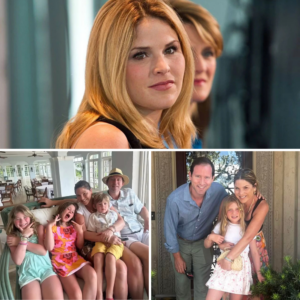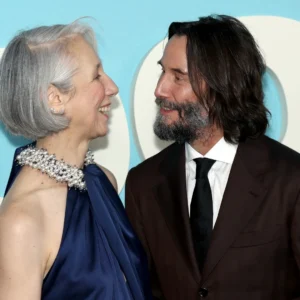A Role That Redefined Her Career—and Her Fears
Jodie Foster’s portrayal of Clarice Starling in the 1991 psychological thriller The Silence of the Lambs remains one of the most iconic performances in cinematic history. The film, directed by Jonathan Demme, not only swept the “Big Five” Academy Awards—Best Picture, Best Director, Best Actor, Best Actress, and Best Screenplay—but also cemented Foster’s status as a Hollywood legend. Her role as an FBI trainee tasked with delving into the mind of the cannibalistic serial killer Hannibal Lecter (played by Anthony Hopkins) captivated audiences worldwide, earning her a second Best Actress Oscar following her win for The Accused in 1989. However, the role came with an unexpected and chilling aftermath: Foster began to feel stalked, a fear that lingered long after the cameras stopped rolling, and the surprising truth behind these experiences reveals a deeper connection between her life and her art.
Foster’s fears of being stalked were not entirely new. A decade before The Silence of the Lambs, she had endured a traumatic experience with John Hinckley Jr., a stalker who became obsessed with her after seeing her performance in Martin Scorsese’s Taxi Driver (1976). Hinckley’s fixation culminated in a horrifying act: in 1981, he attempted to assassinate President Ronald Reagan in a twisted bid to gain Foster’s attention. The incident thrust Foster into a media frenzy, forcing her to confront the invasive nature of fame at a young age. In an Esquire article titled “Why Me?” published later that year, Foster detailed the emotional toll of the ordeal, writing, “I didn’t have the time to feel it then. There were things to be done, secrets to keep. I was supposed to be ‘tough,’ like cowboys, like diplomats, like ‘unaffected actresses’—not because anyone asked me to but because I wanted to show them (God knows who) that I was strong.”

The Hinckley incident left a lasting mark on Foster, shaping her understanding of the dangers that can accompany fame, particularly for women in the spotlight. When she took on the role of Clarice Starling a decade later, those experiences resurfaced in unexpected ways. The character of Clarice, a young woman navigating a male-dominated world while confronting the psychological terror of serial killers like Hannibal Lecter and Buffalo Bill, resonated deeply with Foster’s own struggles with vulnerability and the feeling of being watched. In The Silence of the Lambs, Clarice is often surrounded by men who tower over her, their eyes prying into her every move—a dynamic Foster mirrored with her own experiences of feeling objectified and pursued.
A Role That Hit Too Close to Home
During the filming of The Silence of the Lambs, Foster found herself grappling with a new kind of fear—one that stemmed from her co-star Anthony Hopkins’ chilling performance as Hannibal Lecter. In multiple interviews, including a 2016 appearance on The Graham Norton Show, Foster revealed that she was so terrified of Hopkins after their initial table read that she avoided speaking to him for the entirety of the shoot. “He was scary!” she admitted, recalling how she felt a “chill come over the room” when Hopkins launched into character. The two didn’t have a proper conversation until the last day of filming, when Foster, eating a tuna fish sandwich, confessed her fear to Hopkins—who, in a surprising twist, admitted he had been scared of her as well.
This mutual intimidation added an authentic tension to their scenes, but it also heightened Foster’s sense of unease. The film’s narrative, which delves into the psyche of obsessive psychopaths, mirrored her own experiences with real-life stalkers. Clarice’s encounters with Lecter, a manipulator who uses language to probe and unsettle, and Buffalo Bill, a killer fixated on his victims’ bodies, echoed the kind of obsessive behavior Foster had faced from Hinckley. While Foster has never explicitly stated that her performance was directly influenced by the Hinckley incident, her reflections in the Esquire article suggest a subconscious connection. She wrote about feeling the “uncomfortable, fascinated eyes” of the media, a sensation that parallels Clarice’s vulnerability in the film, such as the iconic elevator scene where she’s surrounded by towering male FBI agents, their gazes heavy with scrutiny.
After The Silence of the Lambs was released in 1991, Foster’s fears of being stalked intensified. The film’s massive success—it grossed over $270 million worldwide and became a cultural phenomenon—thrust her into an even brighter spotlight. Fans and media alike became obsessed with her portrayal of Clarice, often quoting Lecter’s lines like “A census taker once tried to test me…” when they encountered her. While the attention was a testament to the film’s impact, it also brought a renewed sense of vulnerability. Foster began to feel as though she was being watched, a paranoia that echoed the themes of her character’s journey. In a 2021 interview with Variety, Foster reflected on the film’s lasting impact, noting how it “seeps into people’s consciousness through fears,” a sentiment that mirrored her own experiences of feeling pursued.
A New Stalker Emerges
Foster’s fears were not unfounded. In 2016, a new stalker emerged, further compounding her sense of unease. Celine Martelluer, an obsessed fan, began harassing Foster, visiting her Beverly Hills home and even following her to Toronto, where Foster was filming. Martelluer sent disturbing emails, including one that read, “I am still in Toronto until next month. I am around avoiding cops. Jodie is in my thoughts every minute.” The situation escalated to the point where Foster’s wife, Alexandra Hedison, sought a restraining order against Martelluer. In court documents obtained by TMZ, Hedison referenced the Hinckley incident, noting that Martelluer’s behavior mirrored the “mentally troubled” actions of Foster’s previous stalker. Although police were called when Martelluer buzzed the security gate at their home, no arrest was made at the time because she had not yet breached an existing protective order.
This incident, occurring 25 years after The Silence of the Lambs, underscored the persistent challenges Foster faced as a public figure. The parallels between her real-life experiences and the themes of the film were striking: just as Clarice Starling had to confront the psychological terror of being targeted by killers, Foster found herself navigating the real-world terror of being targeted by obsessive fans. The Hinckley incident had already shown her how fame could attract dangerous fixation, and Martelluer’s actions reinforced that reality. Yet, the surprising truth behind Foster’s experiences lies not just in the persistence of these threats, but in how they shaped her resilience and advocacy.
The Surprising Truth: Turning Fear into Strength
The surprising truth about Jodie Foster’s stalking fears after The Silence of the Lambs is that they became a catalyst for her growth as an artist and advocate. Rather than allowing these experiences to define her as a victim, Foster channeled them into her work and her activism, particularly around issues of privacy and safety for women in the entertainment industry. Her performance as Clarice Starling, while informed by her past trauma, also became a source of empowerment. In a 2017 Q&A at the British Film Institute, Foster spoke about the importance of playing a character who saves others, a stark contrast to the victim roles she had often portrayed earlier in her career. “For me, it was so important to make there was a healing process, to finally playing a woman who saves the women,” she said.
Foster’s experiences with stalking also deepened her understanding of the psychological dynamics she portrayed on screen. Her ability to embody Clarice’s quiet strength and vulnerability was, in part, a reflection of her own journey—facing fear head-on while refusing to be diminished by it. In the same BFI Q&A, she noted that The Silence of the Lambs remains “relevant today,” particularly in its exploration of violence and gender dynamics, themes that resonate with her own advocacy for women’s safety and autonomy.
Moreover, Foster’s encounters with stalkers prompted her to take a more active role in protecting her privacy and supporting others in similar situations. Her wife’s decision to seek a restraining order against Martelluer was a proactive step, reflecting a broader commitment to ensuring their family’s safety. Foster has also been vocal about the need for better protections for public figures, particularly women, who often face disproportionate harassment. In a 2021 interview with Vanity Fair, she spoke about the film’s ability to tap into universal fears, a perspective that likely stems from her own encounters with real-life threats.
A Legacy of Resilience
As of April 2025, Jodie Foster remains a towering figure in Hollywood, celebrated not only for her contributions to film but also for her resilience in the face of personal challenges. Her experiences with stalking, particularly after The Silence of the Lambs, have not diminished her passion for storytelling. Instead, they have informed her work as a director and producer, where she continues to explore complex themes of justice, trauma, and empowerment. Projects like her 2021 film The Mauritanian, which deals with the fight for justice in the face of systemic abuse, reflect her ongoing commitment to using art as a tool for change.
Foster’s journey also serves as a reminder of the hidden costs of fame, particularly for women who dare to break barriers in the entertainment industry. Her ability to transform fear into strength—both on screen and off—has made her a role model for countless fans and aspiring artists. The surprising truth behind her stalking fears is not just the persistence of those threats, but the way she has used them to fuel her advocacy and artistry, proving that even in the face of darkness, there is room for healing, growth, and empowerment.





